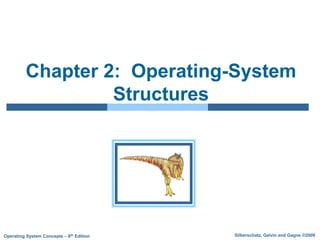The document discusses various aspects of operating system structures including:
- Operating system services like user interfaces, program execution, I/O operations, and more.
- The user-OS interface including command-line and graphical user interfaces.
- System calls which are the programming interface to OS services.
- Common approaches to structuring operating systems like layered designs, microkernel architectures, and virtual machines.

















































